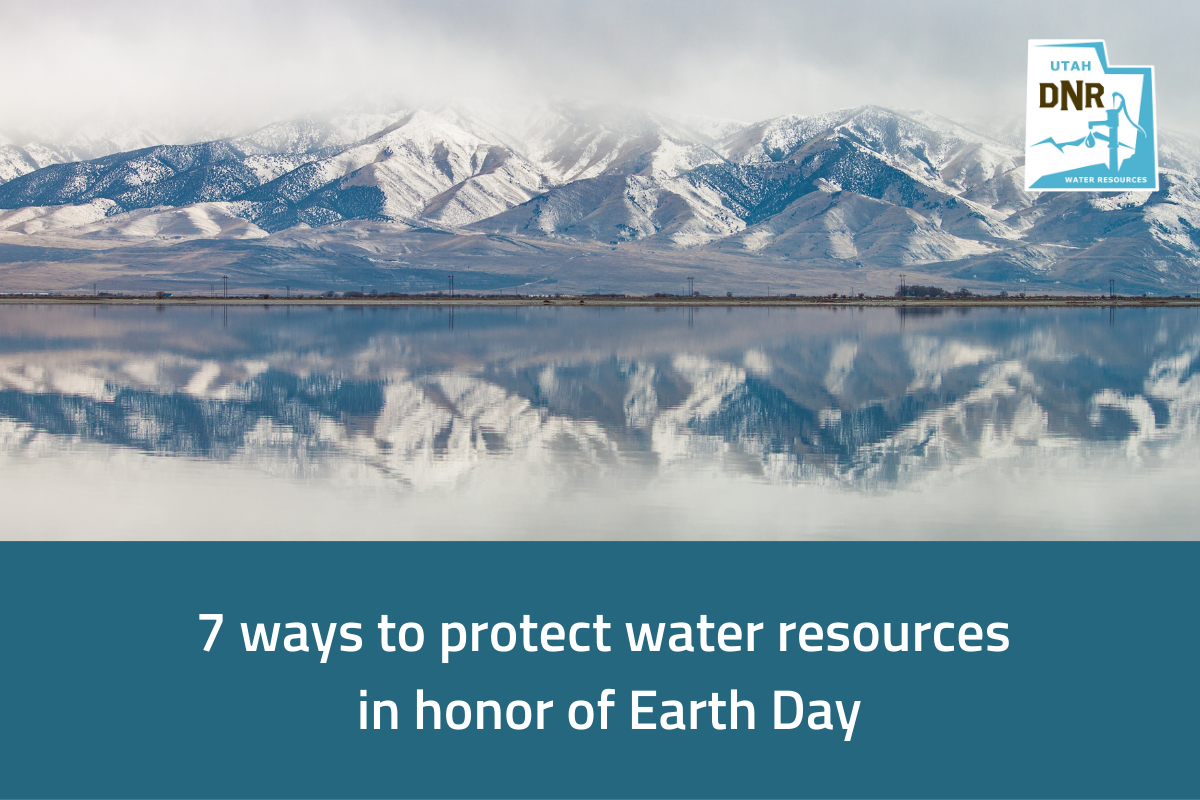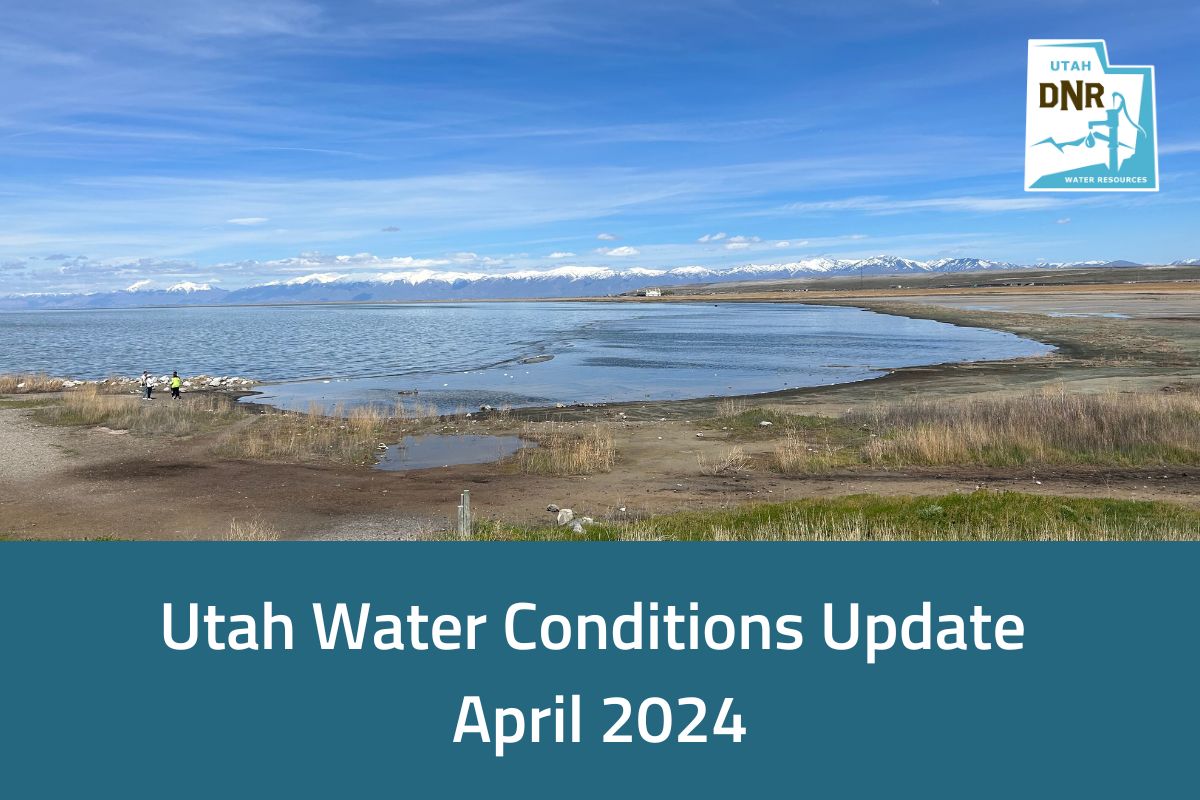SALT LAKE CITY (Sept. 14, 2023) – Monsoonal moisture has played a critical role in reducing water demand across the state. While it hasn’t significantly boosted reservoir levels, it has been instrumental in curbing the pressure on the state’s water resources.
“Monsoonal moisture may not have been a silver bullet for our reservoirs, but it has been a lifeline in reducing demand,” Candice Hasenyager, the director of the Division of Water Resources, said, “It reminds us that nature plays an important role in our quest for resiliency, and reducing demand is the one lever we have to pull to secure our water future.”
Over the last several summers, evaporative demand, or how thirsty the air is for water, has been unseasonably high. In the past three months, however, demand was lower in the western half of the state and only higher than typical in the southeastern portion of the state. This lower evaporative demand meant that less water was needed to keep landscapes healthy. Since outdoor use is about 60% of residential use, this can result in big water savings.
Statewide reservoir storage is at 77%, a considerable improvement from last year’s 45% at this time. For context, the normal storage level for this period is around 57%. Our reservoirs are declining at a slower rate than typical. This is likely due to the lower evaporative demand on reservoirs as well as lower human use due to the lower evaporative demand. Statewide, reservoirs have dropped a little over 8% since their peak in July. Normally, reservoirs drop around 15% when looking at the same period of time for reservoirs statewide.
Great Salt Lake levels peaked at an elevation of 4194.0 (on June 19 and 20), which is about 5.5 feet above the record-low set last November. The lake’s salinity has returned to favorable levels. As inflows decrease and temperatures rise, the lake is expected to decline until October, when cooler temperatures and precipitation increase.
“As we transition into the next season, it’s important for everyone to be mindful of their irrigation practices,” Hasenyager said. “This is the time when we should start dialing back our irrigation schedules, paying close attention to how much water we use. Conservation is still a top priority in order to ensure responsible water usage. Our Weekly Lawn Watering Guide provides general recommendations based on the weather to help community members be more waterwise.”
How does monsoonal moisture affect our reservoirs?
- Increased Inflows: Monsoonal moisture can lead to intense, short-term rainfall. While this can contribute to an immediate increase in the inflow of water into reservoirs through runoff from rivers and streams, the overall impact on reservoir levels can be relatively short-lived, especially if the region experiences a rapid return to drier conditions.
- Improved Water Quality: The flush of monsoonal rains can be beneficial for reservoir water quality. It can help dilute pollutants and reduce the buildup of sediments in the reservoir, especially when followed by effective reservoir management practices.
- Reduced Irrigation Demand: One of the most significant benefits of monsoonal moisture for reservoirs is its impact on how often we need to irrigate. This reduces the demand for irrigation water, which is typically a significant draw on reservoir resources. As a result, monsoons help conserve water and reduce the strain on reservoirs during this period.
- Supporting Ecosystems: Monsoonal moisture can also benefit aquatic ecosystems connected to reservoirs. Increased water flow from the monsoon rains can provide critical habitat and breeding conditions for fish and other aquatic life. This supports biodiversity and ecological health.
- Flood Risk Management: While the moisture is beneficial, it’s essential for water resource managers to monitor reservoir levels during monsoon events to prevent potential overflows and flooding. Proper reservoir management, including controlled releases, is essential to manage flood risks effectively.
- Water Supply Planning: Monsoonal moisture, although temporary, can provide a respite from drought conditions. It’s a crucial period for water resource managers to assess reservoir conditions, plan for future water needs and emphasize the importance of water conservation practices even during wetter periods.
In summary, while monsoonal moisture might not have a sustained impact on reservoir levels, it significantly contributes to reduced demand for irrigation water. This helps conserve water resources and alleviate pressure on reservoirs during the monsoon season, ultimately benefiting water availability for various purposes in regions where agriculture heavily relies on natural rainfall. Proper reservoir management and long-term water resource planning remain essential to maximize the benefits of monsoonal moisture while managing associated risks.
To encourage water conservation among residents, the Department of Natural Resources continues to promote initiatives such as the Agricultural Optimization Program for farmers and SlowtheFlow.org for residents. These programs aim to educate and incentivize water-saving practices, ensuring Utahns become more drought resilient and prepare for future conditions.
# # #
For more information, contact Michael Sanchez, public information officer, at 385-226-8967 or email msanchez@utah.gov.




